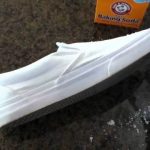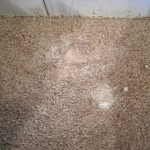In this article, we will discuss the best way to soundproof a room. There are numerous reasons such that you want to a soundproof a room. You might want to your own recording studio or music, an office, meditation space, etc. In fact, everyone has a room they wish they could it a soundproof space. Despite applying many techniques you could keep the sound outside then follow this article. The professional method can be quite expensive so you need a better and effective alternative.

Top Ways to Soundproof a Room:
1.) Adding Mass/Density to Soundproof a Room
You room walls should have enough mass such that they prevent vibration when outside sound wave strikes on them. You can add some additional mass to the walls to prevent them from vibrating in response to sound energy. While building a room from the scratch, you should add adequate mass to the wall simply by building it thick using a dense material such as concrete. For the rooms that already built, you need additional structure to make it a soundproof room. The additional structure must be built with materials such as mass loaded vinyl, aka Sheet block.
To get complete soundproof room you need to measure the effectiveness of the materials. The measurement will tell you about the ability of material at soundproofing. There is a metric system known as Sound Transmission Class (STC) which is generally used to measure sound intensity. Tough materials like concrete will have quite higher STC’s compared to softer materials such insulation.
Some Sample Metric Values, STC:
- 20-35 is poor
- 35-45 is average
- 45-55 is good
There are some other metric values used is Sound Transmission Loss (STL) which gives an idea about isolation in dB at particular frequency band. While Sound Transmission Class (STC) uses just a number for the entire frequency spectrum, it can mislead in terms of actual performance.
2.) Damping to Soundproof a Room
Damping is similar to adding mass but works in completely different manner. It converts the incident sound kinetic energy into heat and dissipates it. There are several damping compounds available in the market, you can choose according to your need. However, the Green Glue is widely-known as the most effective and affordable damping compound on the market. You do not need the help of professional to fix them.
Just sandwich the Green Glue between two rigid panels, such as drywall, plywood, or low to medium density fiberboard by using two tubes for every 4×8 feet sheet. This method can easily create a make-shift sound barrier for your own studio that can be added to any place of the room, including the floor, walls, ceiling, or even the door.
3.) Decoupling to Soundproof a Room
Sound waves need a medium to travel, unlike Electromagnetic waves. If any two structures in your room are in the direct contact then the situation can get worse. As the sound vibrations can easily get transferred to one structure to other and your problem gets even worse. To overcome this problem, decoupling is a great process of blocking that transfer of sound wave by isolating the contact points. You can do this using some sort of dense, pliable rubber.
4.) Filling Air Gaps to Soundproof a Room
A sound wave travels through air freely so your final task will be making sure all the little cracks and holes in the room are sealed up and air-tight. Please note that your all hard efforts will have no effect if leave any open spaces offering an easy passage for the sound wave to sneak through. The three most common tools used to plug up the holes are:
- Acoustical Caulk
It can be used to block up any cracks in the perimeter of the room. It is quite useful in blocking small holes that may exist elsewhere. This type of caulk remains pliable and soft, so no gaps will be opened up over time in your room.
- Foam Gaskets
They can easily seal up air gaps from your window, electrical outlets, doors, etc.
- Automatic Door Bottoms
The door can be a major reason for air gaps, so you need to seal any air opening. Automatic door bottoms can block the open space between the bottom part of the door and the floor.















